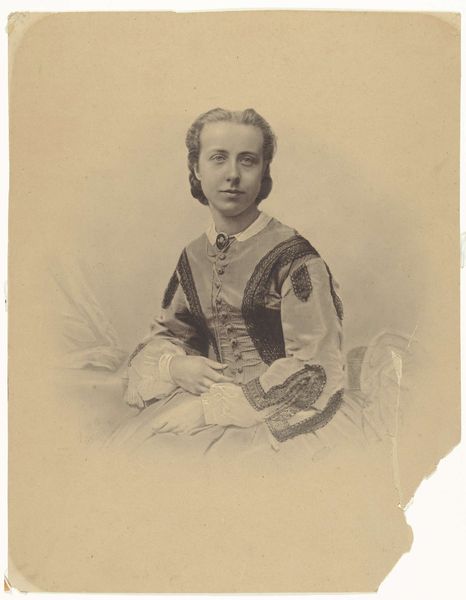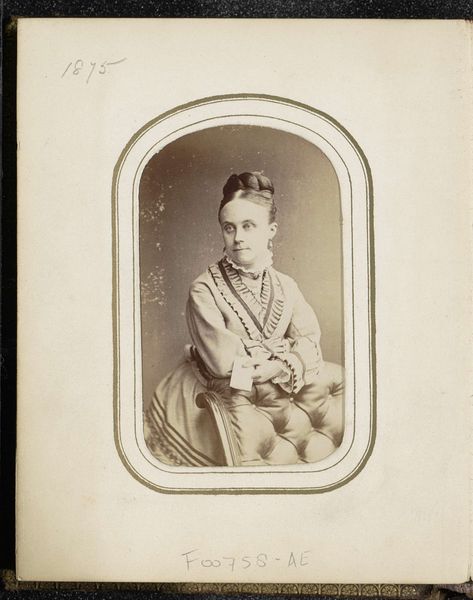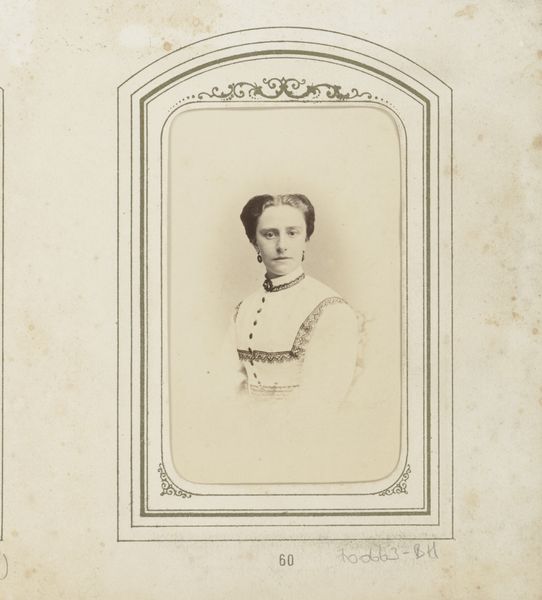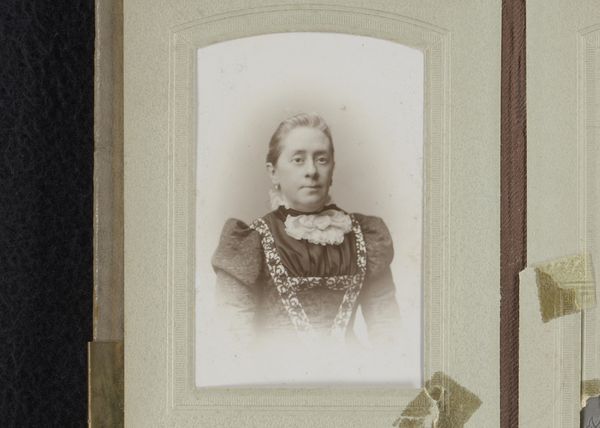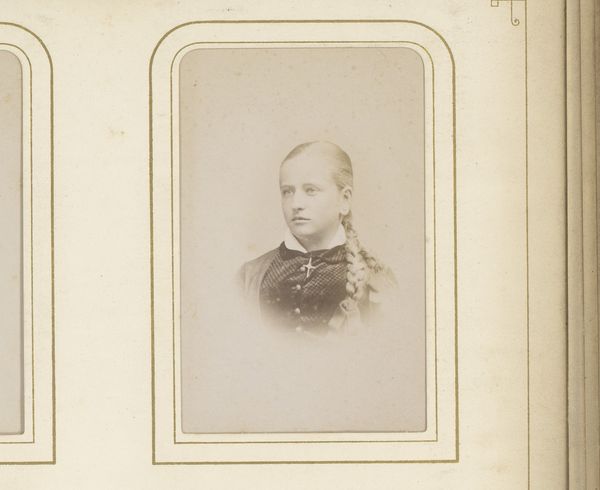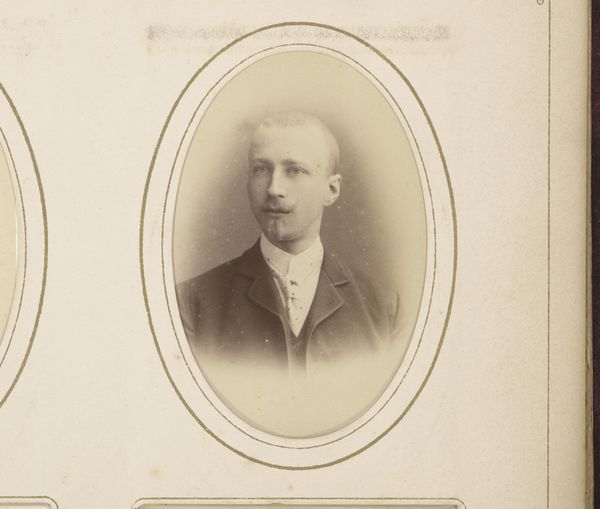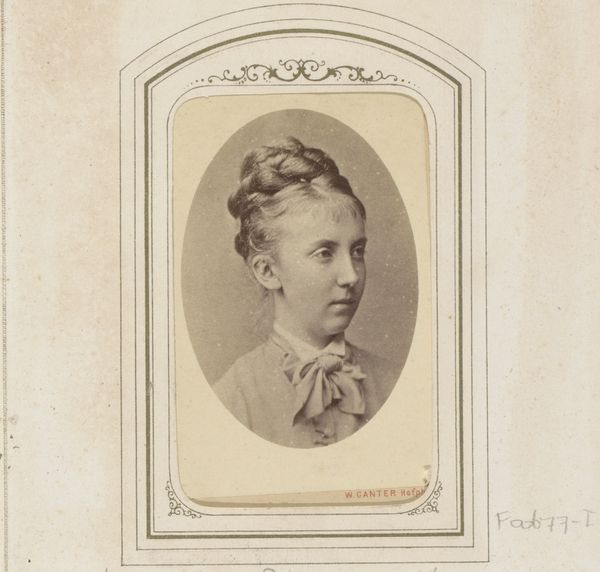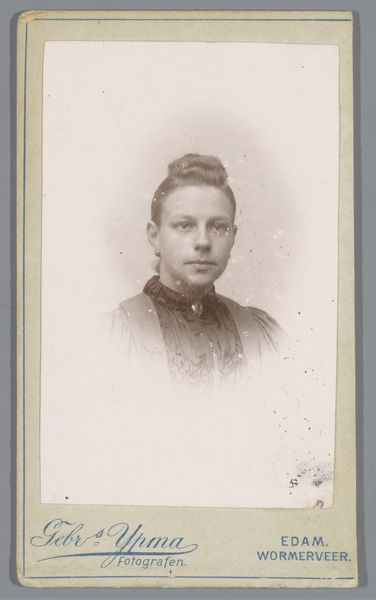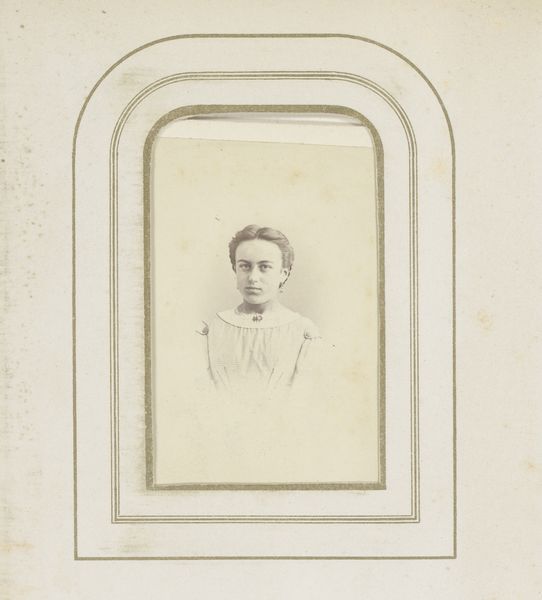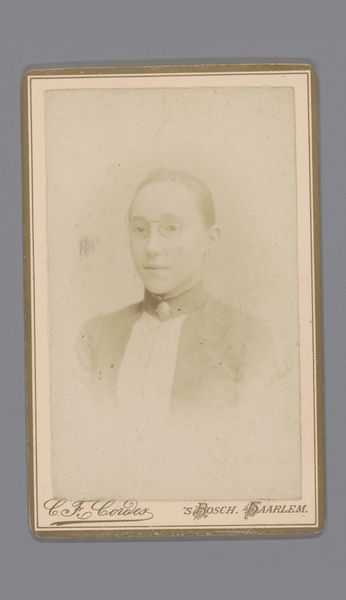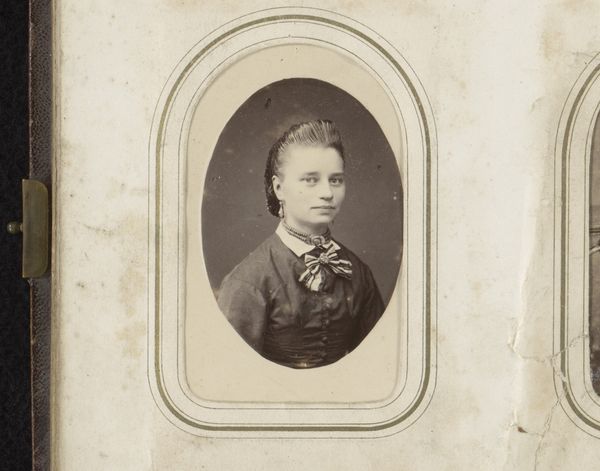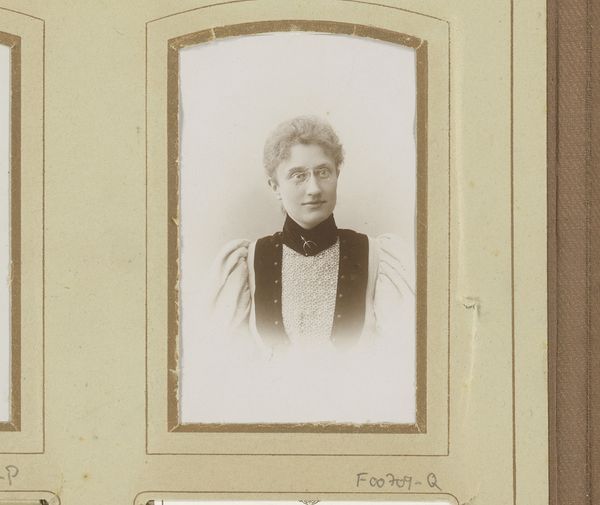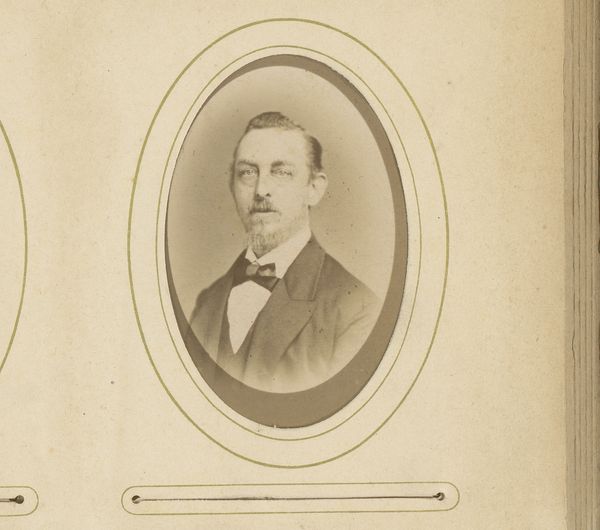
photography, albumen-print
#
portrait
#
photography
#
historical photography
#
19th century
#
albumen-print
Dimensions: height 85 mm, width 53 mm
Copyright: Rijks Museum: Open Domain
Curator: I'm immediately struck by the quiet intensity in this young woman's gaze. The albumen print lends the image a hazy, almost ethereal quality, making it feel both immediate and distant. Editor: It’s an arresting image, isn't it? This is “Portret van een jonge vrouw” – Portrait of a Young Woman – dating from between 1860 and 1880, by Hendrik Anthonie Karel Ringler. A stunning piece of historical photography. It prompts us to consider the social constraints and gendered expectations placed upon young women in the 19th century. Her clothing, that high-necked dress buttoned so demurely, speaks to a very particular performance of femininity. Curator: You’re right about the costuming. The placement of the buttons draws attention directly to her chest, but also shields it—presenting a compelling dichotomy, something both suggestive and extremely demure. Editor: It is suggestive of both promise and containment. How much power do you think she actually held within the domestic sphere? Photography itself was democratizing, but the codes of conduct remained firmly entrenched. She performs compliance, perhaps, while also hinting at nascent individuality through the unwavering quality of her gaze. What do you think that small black ribbon says about status and social identity at this time? Curator: Visually, the ribbon offers a stark contrast. It frames her neck in a manner that almost suggests defiance, a small but potent break in the pastel shades and the overall uniformity. Ribbons as markers of status have existed for ages, although a plain ribbon like this might suggest a more restrictive circumstance, like a period of mourning. Editor: Fascinating to consider. Does that oval frame surrounding the portrait affect your interpretation at all? It feels simultaneously protective and imprisoning, like a Victorian locket. Curator: Absolutely. It reinforces this sense of containment we spoke about before, presenting her as an object, contained and presented for public consumption. She's been positioned very deliberately for posterity. This portrait reminds us that the act of image-making can also be an act of control. It offers an extremely fertile space for examining themes of power, visibility, and representation through an intersectional lens. Editor: Ultimately, though, she defies being completely contained, doesn't she? The emotional complexity that pierces through leaves us wondering what life choices she might have made outside the frame.
Comments
No comments
Be the first to comment and join the conversation on the ultimate creative platform.
